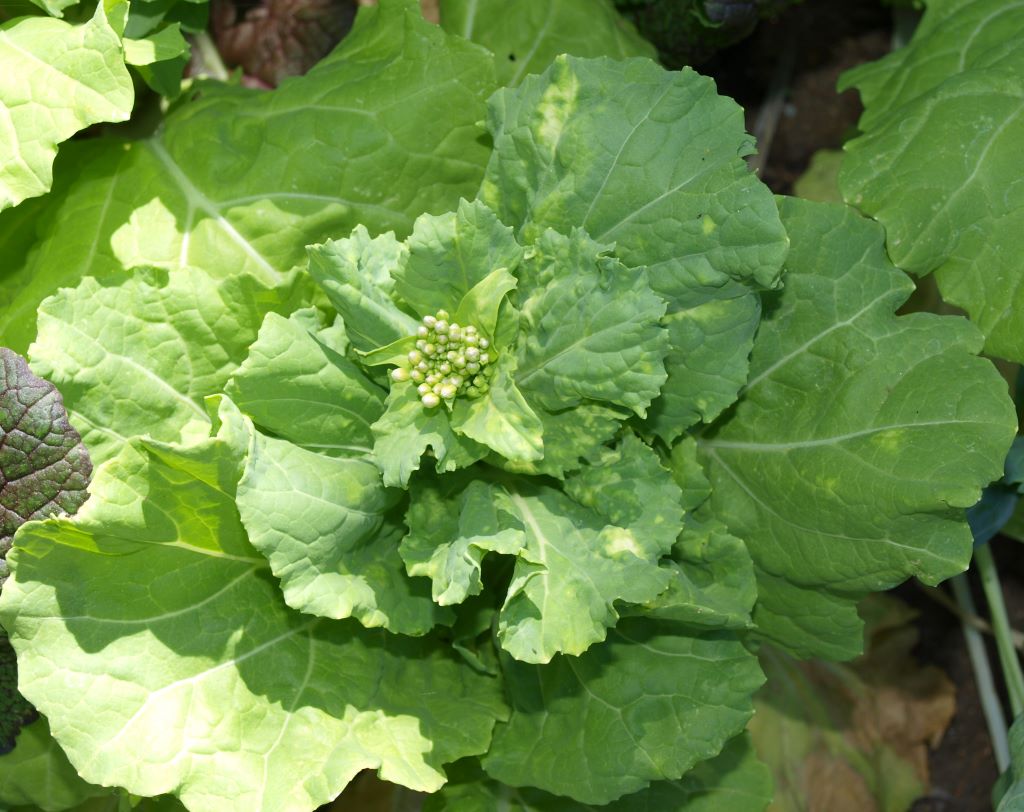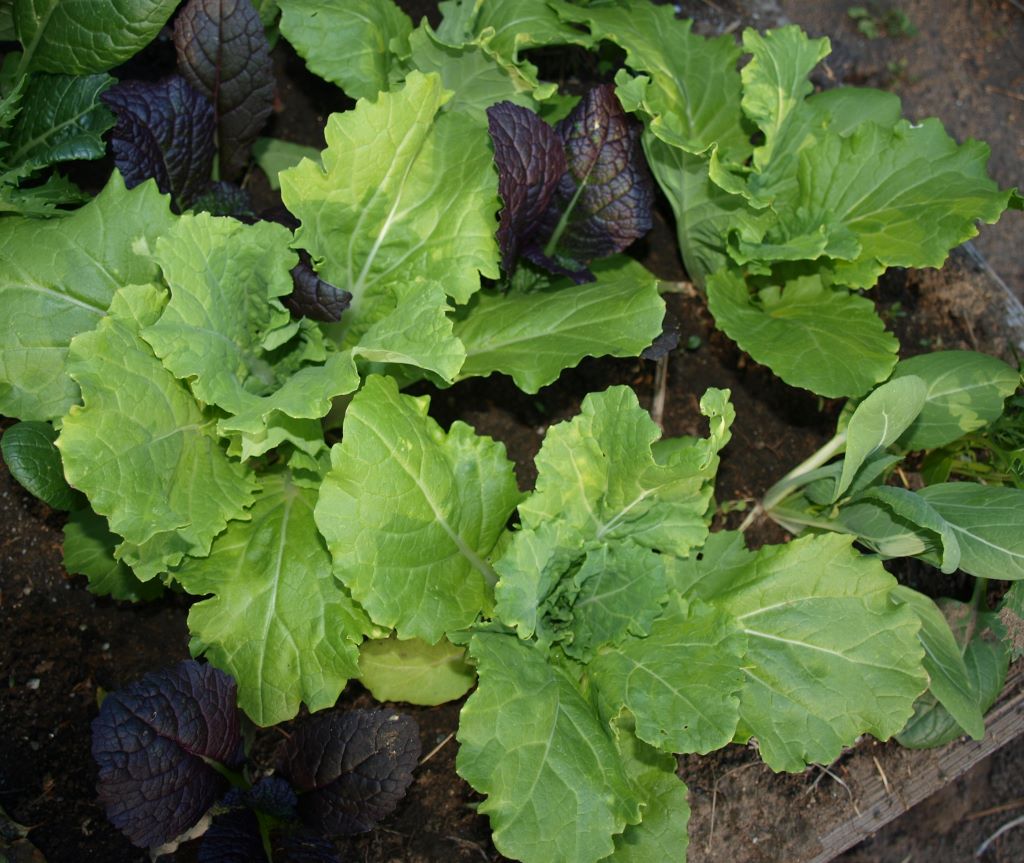Komatsuna
B. rapa var perviridis (or B. rapa var komatsuna)
This Japanese plant is sometimes known as spinach mustard (or mustard spinach) because it is used like spinach, though it isn’t related. Joy Larkcom, the English edible gardening expert (and my favorite garden writer) said in her fantastic book Asian Vegetables that she was tempted to give this the most underrated vegetable award
Komatsuna is an easy plant to grow and deserves to be much more widely used. It grows rapidly (it matures in as little as 35 days), is very productive and has a nice mild flavor.
Soil
pH 6.0 to 7.0
This is a fairly hungry crop and prefers a rich, moist, well-drained soil with lots of nitrogen. It doesn’t like acid soil.
Soil preparation: Incorporate 2˝ of compost or aged manure into the top 6˝ of soil. If it is acidic add lime to raise the pH.
| About Komatsuna Seed facts Germ temp: 45 – 80˚F Germ time: 3 – 10 days 5 days at 50˚F 3 days at 59˚F 2 days at 68˚F 1 day at 77˚F * Optimum Germination percentage: 75+ Viability: 5 – 9 years Planning facts Growing temp: 55 (60 – 65) 70˚F Transplants: Start: 2 weeks before last frost Plant out: 2 weeks after last frost Direct sow: 4 wks before last frost Fall crop: 8 – 10 wks before fall frost |
Planning
Where: Should be planted in a sunny location that is sheltered from cold winds. Ideally don’t plant it where any other Brassicas have been grown in the last three years.
When: This is also one of the most cold tolerant of all vegetables, growing through the winter in mild climates and often surviving under the snow in colder ones. It does very well as a winter crop in greenhouses or poly tunnels.
Komatysuna also has some tolerance of warm weather and in some areas they can be grown year round.
Spring: Start it indoors 2 weeks before the last spring frost. Plant it out 4 weeks later.
Fall: Komatsuna works great as a fall crop and is less prone to bolting in the shorter days.
Planting
Indoors: Plant it in cell packs or soil blocks to minimize transplant shock.
Outdoors: Sow the seeds ½˝ deep and about 3 – 4˝ apart. Start thinning when the plants have 4 – 5 leaves. As plants get bigger you can harvest thin to leave the plants at their final spacing of 10 – 12˝. Use the thinnings in the kitchen.
It can also be started in an outdoor nursery bed, though it doesn’t like transplanting very much (it must be young to transplant successfully).
Spacing: Plant in offset rows across the bed, 6 – 10˝ apart each way.
Care
Weeds: Keep down weeds while the plants are young, as they don’t compete for nutrients very well.
Watering: This shallow rooted crop must have evenly moist soil. Never let it dry out, or it will probably react by bolting.
Mulch: This is helpful to keep down weeds, conserve moisture and keep the plants cleaner.
Pests: Most of the pests and diseases that attack cabbages may also attack these plants. If anything, they are even more susceptible, for example it is more attractive to the cabbage root fly than cabbage and is sometimes planted alongside the various Brassicas as a trap crop. Pests aren’t usually a big problem though.

Harvest
How: You can gather individual leaves any time, or you can harvest thin every other plant in a bed, leaving the rest to grow to full size.
Flower stem: If a plant gets away from you completely and sends up a flower stalk, harvest it before the flower buds open and use it like broccoli. It will make more attempts to flower and these can all be eaten too. If you miss these you can always collect the seed for sprouting.
Seed saving: This is done in pretty much the same way as for turnip and cabbage. It is cross-pollinated by insects and will cross with any other B. rapa crop (which includes turnip, broccoli raab and pak choy) as well as other Chinese cabbage varieties. You should save the seed from at least 6 plants to ensure some genetic variability.
These plants will produce more seed than you need for propagation. The surplus can be used for growing cut and come again salad greens and micro-greens, or for sprouting like alfalfa.
Though it is often sold as simply komatsuna, there are a few distinct varieties available, including:
Summerfest
Red komatsuna











